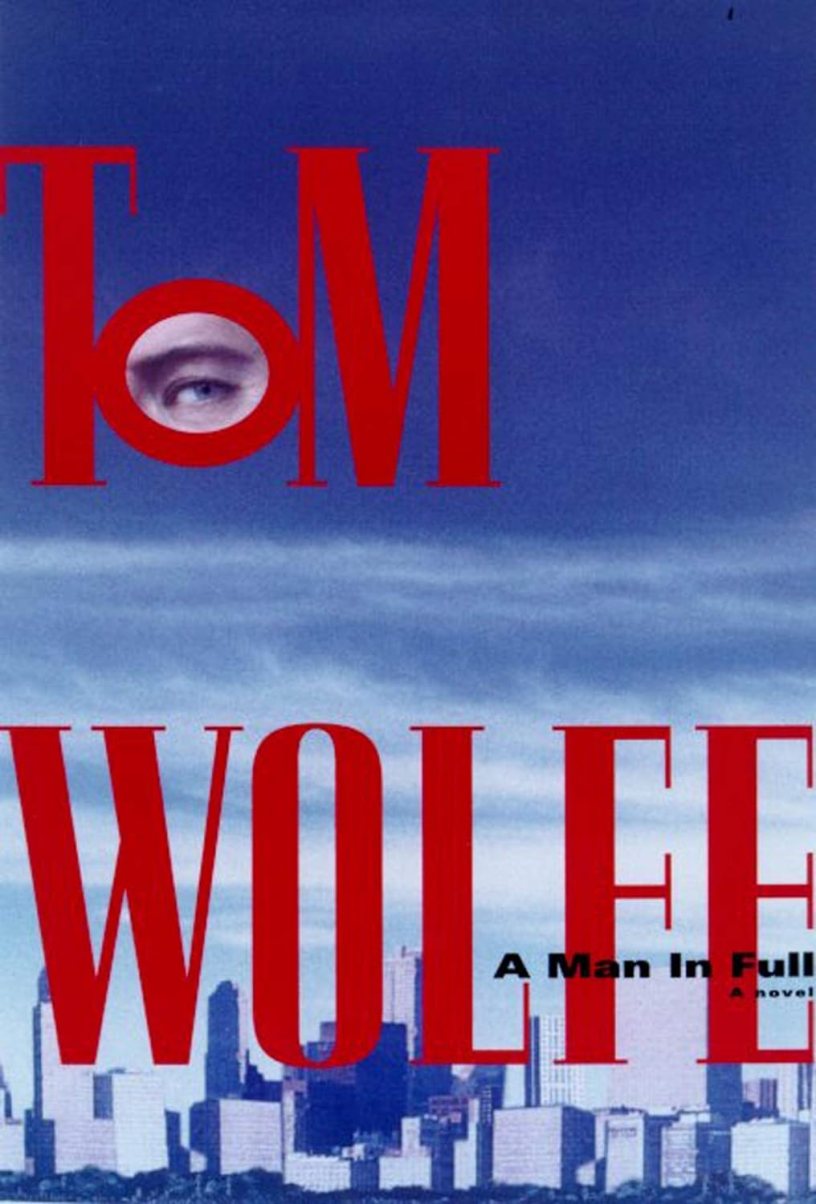I was going to cram the world into that book, all of it.
Tom Wolfe was stylistic trend hopper. His 1968 dive into hippie culture The Electric Kool-Aid Acid Test is a weird book, but not in the way that it wants to be. It wants to be a true hippie document, with a garish style of drug jargon and party scenes. But we ask ourselves – is this supposed to be fiction or what? The weirdness comes from how Wolfe as the writer is both invisible and omniscient. And how by so immersing himself in the subject, he becomes the central figure. This is New Journalism, the phrase for which Wolfe will be best remembered.
His first foray as a “proper” novelist was 1987’s The Bonfire Of The Vanities. The plot draws from the extremes of ’80s Manhattan life, high and low crimes in abundance. Delving into money troubles, race, and city politics, the book is as essential to its era as Slaves Of New York or American Psycho. His next novel went through a series of permutations, focusing on class dichotomies centered in Atlanta. At over 700 pages with a rotating cast of characters, A Man In Full also speaks to its era. It kind of reminds me of Infinite Jest.
The title refers to the three generations of its protagonists. Charlie Croker is a real estate kingpin on the brink of collapse, in the relative sense of a man with a half-billion dollar empire. That relative part is wonderfully explored. What does it mean for a rich guy to go broke? The bank will take your private jet, for one. While the minions chomping around the edges will plot their own paydays. The second character is Roger “Too White” White II, a black lawyer who becomes embroiled in a controversy involving a star college football player and a sexual assault allegation. The third is Conrad Hensley, an overnight grocery stocker who finds himself through an improbable series of events on the periphery of these intertwined stories. This is the Man in Full – three generations and backgrounds, at decisive points in their lives.
Is it a good novel? Yes, despite its faults. Wolfe as ever gets overambitious in his depictions of various cultures. His black dialects and scenes of Freaknik in Atlanta, featuring the songs of “a rap artist named Doctor Rammer Doc Doc” break the verisimilitude, to say the least. Hinting as well at the cringe of his next novel I Am Charlotte Simmons, which in its renderings of college life included a rap artist named “Doctor Dis.” But even under the most critical of judgments, I wouldn’t say that Wolfe’s handling of race is disrespectful. He really tries, which is more than can be said of the white canon of literature, the Great Male Narcissists. Which was precisely the group that attacked him in an ensuing kerfuffle.
By 1998, John Updike and Norman Mailer were out of fashion, to say the least. David Foster Wallace eviscerated Updike in his review of Until The End Of Time. Mailer had spent most of his career courting disfavor with his supreme egotism. Though his work was usually prodigious enough to back up his claims, his most most recent book The Gospel According To The Son was a slight pseudo-autobiography of Jesus. Wolfe’s essay “My Three Stooges” responded to their criticisms of A Man In Full, identifying John Irving as the third attacker.
As always, dissing can make for good publicity, while revealing some truths. Wolfe’s argument had some blind spots. Irving’s 1998 novel A Widow For One Year is mischaracterized as a minor, insular melodrama about “two neurotic writers…unable to get out of a house in Bridgehampton, Long Island.” Actually no – A Widow For One Year is to my mind a better novel than A Man In Full, richer and more organic in its emotional entanglements. But Wolfe’s larger points still stand, about entrenched literary opinions. Specifically how authors complain about “the death of the novel,” and how readers have turned their attentions to movies, or whatever. This may be true, even more now than in the late ’90s. But Wolfe’s counterpoint is – Get Their Attention, Stupids! Content is key, which he defines as “life, reality, the pulse of the human beast.”
A Man In Full is clunky at times, with its soap opera style of a rotating cast miraculously converging. That’s the danger of his opposition to the “self-absorption” of his peers, as he veers too far into a democracy of characterization. Charlie Croker with his vanity and aging woes is the most believable, while younger Conrad Hensley who abandons his wife and child for the sake of the plot, not as much. Still Wolfe had a progressive literary mind. And he liked publicity, because don’t we all, even just as observers? Today he would probably not be above writing about a Trump-like figure with some side stories about protesters and influencers. And there would be a rapper named Doctor somebody.
The Netflix series based on the book has received middling reviews. I haven’t watched it, just because Jeff Daniels doesn’t come close to my vision of the character of Charlie Croker. Nor does the “social commentary” of the novel seem amendable to a modern TV series. Wolfe was more an observer than a moralist. A Man In Full gives us a laser focused symphony of its characters and their times. The nature of his art requires him to be at its center, conducting.


